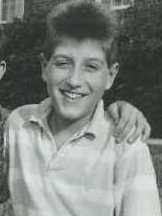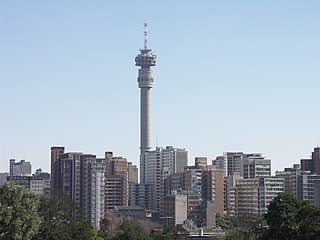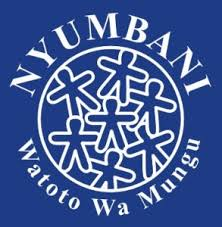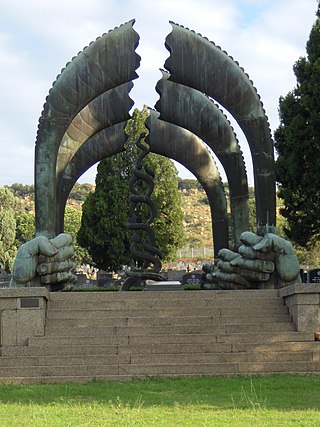
Ryan Wayne White was an American teenager from Kokomo, Indiana, who became a national poster child for HIV/AIDS in the United States after his school barred him from attending classes following a diagnosis of AIDS.

HIV/AIDS denialism is the belief, despite conclusive evidence to the contrary, that the human immunodeficiency virus (HIV) does not cause acquired immune deficiency syndrome (AIDS). Some of its proponents reject the existence of HIV, while others accept that HIV exists but argue that it is a harmless passenger virus and not the cause of AIDS. Insofar as they acknowledge AIDS as a real disease, they attribute it to some combination of sexual behavior, recreational drugs, malnutrition, poor sanitation, haemophilia, or the effects of the medications used to treat HIV infection (antiretrovirals).

HIV/AIDS originated in Africa during the early 20th century and has been a major public health concern and cause of death in many African countries. AIDS rates varies significantly between countries, though the majority of cases are concentrated in Southern Africa. Although the continent is home to about 15.2 percent of the world's population, more than two-thirds of the total population infected worldwide – some 35 million people – were Africans, of whom 15 million have already died. Eastern and Southern Africa alone accounted for an estimate of 60 percent of all people living with HIV and 70 percent of all AIDS deaths in 2011. The countries of Eastern and Southern Africa are most affected, AIDS has raised death rates and lowered life expectancy among adults between the ages of 20 and 49 by about twenty years. Furthermore, the life expectancy in many parts of Africa is declining, largely as a result of the HIV/AIDS epidemic with life-expectancy in some countries reaching as low as thirty-nine years.

Hillbrow is an inner city residential neighbourhood of Johannesburg, Gauteng Province, South Africa. It is known for its high levels of population density, unemployment, poverty, prostitution and crime.

Nkosi Johnson was a South African child with HIV and AIDS who greatly influenced public perceptions of the pandemic and its effects before his death at the age of 12. He was ranked fifth amongst SABC3's Great South Africans. At the time of his death, he was the longest-surviving child born HIV-positive in South Africa.

The global epidemic of HIV/AIDS began in 1981, and is an ongoing worldwide public health issue. According to the World Health Organization (WHO), as of 2021, HIV/AIDS has killed approximately 40.1 million people, and approximately 38.4 million people are infected with HIV globally. Of these 38.4 million people, 75% are receiving antiretroviral treatment. There were about 770,000 deaths from HIV/AIDS in 2018, and 650,000 deaths in 2021. The 2015 Global Burden of Disease Study estimated that the global incidence of HIV infection peaked in 1997 at 3.3 million per year. Global incidence fell rapidly from 1997 to 2005, to about 2.6 million per year. Incidence of HIV has continued to fall, decreasing by 23% from 2010 to 2020, with progress dominated by decreases in Eastern Africa and Southern Africa. As of 2020, there are approximately 1.5 million new infections of HIV per year globally.
Global Camps in Africa is a 501(c)(3) non-profit corporation founded in Reston, Virginia, that operates no-cost American-style summer camps, though many operate year-round, to teach the poorest, most vulnerable children about HIV and AIDS prevention, among other life skills. Global Camps Africa implements its programs through its local South African partner organization, Camp Sizanani Life Skills.

HIV/AIDS in India is an epidemic. The National AIDS Control Organisation (NACO) estimated that 2.14 million people lived with HIV/AIDS in India in 2017. Despite being home to the world's third-largest population of persons with HIV/AIDS, the AIDS prevalence rate in India is lower than that of many other countries. In 2016, India's AIDS prevalence rate stood at approximately 0.30%—the 80th highest in the world. Treatment of HIV/AIDS is primarily via a "drug cocktail" of antiretroviral drugs and education programs to help people avoid infection.
Bethany Hill School is a living and learning community sponsored by the Sisters of Saint Joseph of Boston in collaboration with South Middlesex Opportunities Council and other social service programs in the MetroWest region.

The Nyumbani Children's Home was founded by Father Angelo D'Agostino and Sister Mary Owens in 1992 to serve mostly abandoned children created by the AIDS pandemic. Since then, three more programs have been added to the organization.

The International Children's Peace Prize is awarded annually to a child who has made a significant contribution to advocating children's rights and improving the situation of vulnerable children such as orphans, child labourers and children with HIV/AIDS.
Angola has a large HIV/AIDS infected population, however, it has one of the lowest prevalence rates in the Southern Africa zone. The status of the HIV/AIDS epidemic in Angola is expected to change within the near future due to several forms of behavioral, cultural, and economic characteristics within the country such as lack of knowledge and education, low levels of condom use, the frequency of sex and number of sex partners, economic disparities and migration. There is a significant amount of work being done in Angola to combat the epidemic, but most aid is coming from outside of the country.
HIV/AIDS in Eswatini was first reported in 1986 but has since reached epidemic proportions. As of 2016, Eswatini had the highest prevalence of HIV among adults aged 15 to 49 in the world (27.2%).
With less than 1 percent of the population estimated to be HIV-positive, Egypt is a low-HIV-prevalence country. However, between the years 2006 and 2011, HIV prevalence rates in Egypt increased tenfold. Until 2011, the average number of new cases of HIV in Egypt was 400 per year. But, in 2012 and 2013 it increased to about 600 new cases and in 2014 it reached 880 new cases per year. According to UNAIDS 2016 statistics, there are about 11,000 people currently living with HIV in Egypt. The Ministry of Health and Population reported in 2020 over 13,000 Egyptians are living with HIV/AIDS. However, unsafe behaviors among most-at-risk populations and limited condom usage among the general population place Egypt at risk of a broader epidemic.
The first HIV/AIDS case in Malaysia made its debut in 1986. Since then, HIV/AIDS has become one of the country's most serious health and development challenges. As of 2020, the Ministry of Health estimated that 87 per cent of an estimated 92,063 people living with HIV (PLHIV) in Malaysia were aware of their status, 58 per cent of reported PLHIV received antiretroviral therapy, and 85 per cent of those on antiretroviral treatment became virally suppressed. Despite making positive progress, Malaysia still fell short of meeting the global 2020 HIV goals of 90-90-90, with a scorecard of 87-58-85.
Mercy Manci is a Xhosa sangoma and HIV activist from South Africa. She has participated and presented at conferences in a.o. Cameroon, Nigeria, and Italy.

Westpark Cemetery is a large cemetery in Johannesburg, South Africa, and is the resting place of some of the country's well-known citizens. It is a non-denomination designated burial ground, and thus has Christian, Jewish, Muslim and Chinese burial areas. The Jewish section contains a Holocaust Memorial, erected in 1959.
Gisèle Wulfsohn was a South African photographer. Wulfsohn was a newspaper, magazine, and freelance photographer specialising on portrait, education, health and gender issues. She was known for documenting various HIV/AIDS awareness campaigns. She died in 2011 from lung cancer.
Africa's Children-Africa's Future (AC-AF) was founded in 2006 and was recognized as a registered charity in 2009. The organization conducted programming in Canada and Tanzania to encourage the empowerment of children and youth in response to the various challenges posed by the AIDS pandemic. AC-AF's programming offered grassroots responses and sustainable solutions to build, strengthen and support community resources. Due to significant reforms in funding opportunities, the organization was forced to close its doors in 2014.

In the late 1980s, the African Research and Educational Puppetry Program (AREPP) founded "Puppets Against AIDS", a traveling puppet show that visited African villages and cities to encourage audience members to use condoms to prevent HIV/AIDS transmission.















